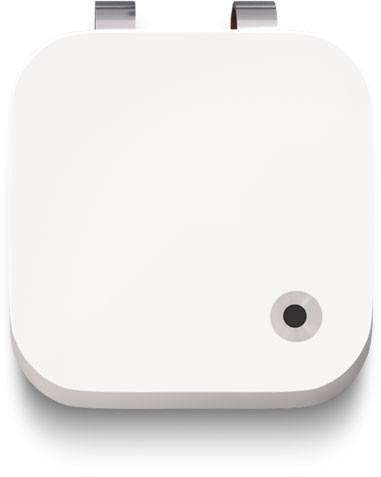Sousveillance Turns the Tables on the Surveillance State
Who watches the watchers? You.

The Narrative Clip is a digital camera about the size of a postage stamp that clips to one's breast pocket or shirt collar and takes a photo every thirty seconds of whatever one's seeing. The photos are uploaded to the cloud and can be accessed on demand with a smartphone app, making it easy to look up any moment in one's life. When the project to mass-produce these cameras first hit Kickstarter, I knew I had to have one, and with any luck mine will be arriving in a couple of weeks.
The prospect of having a complete photographic record of my life is compelling for many reasons. I have a terrible memory, especially for faces, so it will be interesting to see if this device can help. There are also moments in life that would be great to relive, but that one can't–or one doesn't know one should–be photographing. Narrative's Instagram feed has some good examples of these. But most importantly, I want to help hasten our inevitable sousveillance future.
Sousveillance is the recording of an activity by a participant in that activity, and it can be thought of as the inverse of surveillance. The word "sur" in French means "over" or "above," hence surveillance is "watching from above" or "overseeing." The word "sous," by contrast, means "under" or "below." To date, "veillance" has only been available to the powerful–whether through corporate or government CCTV cams perched atop buildings or utility poles–but with the advent of cheap wearable computers we will all soon be able to point a camera back at the powers that be from below.
Being monitored in everyday life has become inescapable. So, as David Brin points out in The Transparent Society, the question is not whether there should be pervasive monitoring, but who will have access to the data. Will it only be the powerful, who will use the information to control? Or will the rest of us also be able to watch back?
Ideally, perhaps, we would all be left alone to live private lives under no one's gaze. Short of halting all technological progress, however, that ship has sailed. Mass surveillance is the inevitable result of smaller cameras and microphones, faster processors, and incredibly cheap storage. So if I can't change that reality, I want to be able to watch back as well.
Luckily, it increasingly looks like the sousveillance ship has also already sailed. When Kodak first introduced cameras cheap and portable enough that almost anyone could have one, public photography still gave people the creeps, and you would have been seen as quite strange to carry around a camera. Today, you're seen as odd if you don't carry an Internet-connected camera with you wherever you go. As a result, sousveillance-based accountability is increasingly commonplace–from George Holliday's videotape of Rodney King being beaten by L.A. police in 1991, to the cell phone video of a UC Davis campus police officer pepper spraying Occupy protesters at point-blank range twenty years later.
Sousveillance will only become more consequential as wearables like the Narrative Clip make recording an always-on phenomenon. In Russia, where police and traffic courts are unreliable if not completely corrupt, dash-mounted cameras are a virtual necessity for motorists. As a result, these always-filming cameras have caught on tape not just phenomenal car crashes, but also suicide bombings and meteor strikes.
Yet wearables will no doubt meet resistance as they become widespread. While sousveillance may be a check on surveillance, it also means pointing the camera at each other, and this makes many uncomfortable. Google Glass is a wearable device that is not constantly recording, and has a mere four-hour battery, but that hasn't stopped banks, hospitals, casinos and schools from banning the device. Yet these are the kinds of institutions that have surveillance systems trained on us that we have come to accept.
No one captures this paradox better than Surveillance Camera Man, an anonymous Seattle man who confronts people in public places with a video camera in a series of panic-inducing YouTube videos. When his invariably annoyed subjects ask him what he's doing, he responds, "I'm just taking a video," pointing out that it's no different from the videos being taken by the many CCTV cameras around, which they don't seem to mind.
Obviously, Surveillance Camera Man's confrontational style accounts quite a bit for the reactions he gets. And indeed Google Glass's head-mounted, always-pointing-at-you design probably has something to do with the reception it's garnered. (I imagine that the more discrete Narrative Clip will fare better.) But despite his in-your-face attitude, Surveillance Camera Man has a point.
He's showing people that they've become comfortable with being recorded from above, something to which they don't take kindly at eye level. Surveillance Camera Man's argument seems to be that we should be just as upset about the proliferation of surveillance as we are about his antics. Yet what he might be capturing is the end of an era. Humans are nothing if not resilient, and it's more likely that we will adapt and become as comfortable with sousveillance as we have with surveillance.
As Narrative Clips and Google Glasses (and whatever Apple is working on) begin to proliferate, It won't be long before Surveillance Camera Man finds a camera pointed back at him.


Show Comments (37)